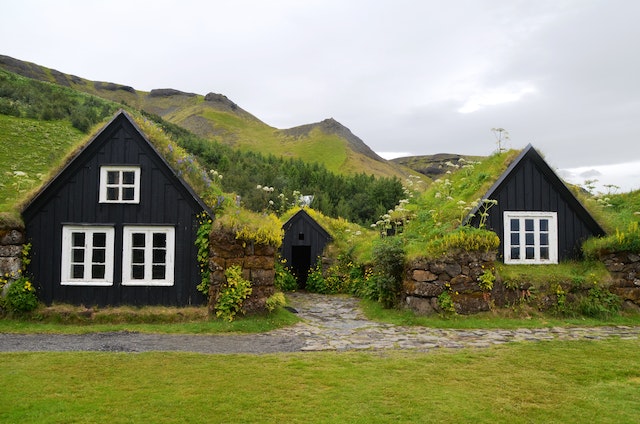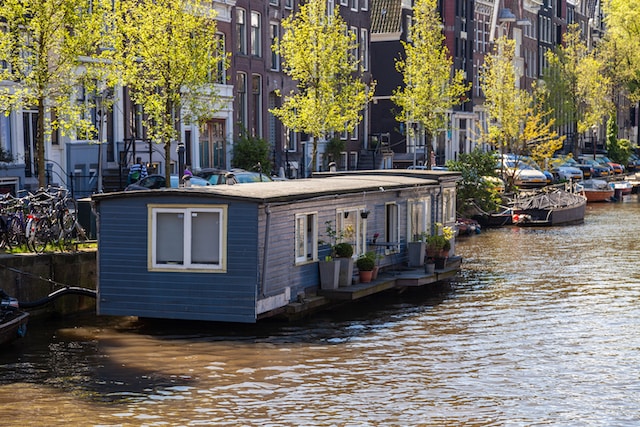
Tiny houses are rapidly gaining popularity as people seek to downsize and simplify their living spaces. But did you know that there are several different types of tiny houses? In this article, we’ll explore some of the most popular types of tiny houses and what makes them unique.
Traditional Tiny Houses
When it comes to tiny houses, the traditional style is the most common and widely recognized. These small dwellings offer a cozy, compact living space that is perfect for minimalists and those looking to simplify their lives.
Mobility and Flexibility
One of the defining features of traditional tiny houses is their mobility. Many of these homes are built on a trailer, allowing homeowners to easily transport their house to different locations. This flexibility is ideal for those who value the ability to change scenery or relocate with ease. Whether you want to explore different communities or simply move your house to a more scenic spot, a traditional tiny house on wheels provides the freedom to do so.
Compact and Efficient Design
Traditional tiny houses are designed to maximize every square inch of space. With floor plans typically ranging from 100 to 400 square feet, it is essential to prioritize efficiency and functionality. These homes often feature multifunctional furniture, clever storage solutions, and innovative design elements to make the most of the limited space available. From lofted sleeping areas to hidden storage compartments, traditional tiny houses showcase the art of thoughtful design.
Cozy and Intimate Living
Living in a traditional tiny house invites a sense of coziness and intimacy that is often absent in larger dwellings. The compact size creates a warm, snug environment, perfect for individuals or couples looking to create a sanctuary that truly feels like home. With careful attention to design and decor, traditional tiny houses can exude a sense of charm and character that is unique to these small spaces.
Sustainable Living
Traditional tiny houses align well with the principles of sustainable living. With their smaller size, these homes require fewer resources to construct and maintain, resulting in a reduced environmental footprint. Additionally, many homeowners of traditional tiny houses opt for energy-efficient appliances and renewable energy sources, further minimizing their impact on the planet. Living in a traditional tiny house allows for a more mindful and eco-conscious lifestyle.
Affordability and Financial Freedom
One of the biggest draws of traditional tiny houses is their affordability. Compared to traditional housing, the cost of building or purchasing a tiny house is significantly lower, making it an accessible option for those looking to own their own home without a hefty mortgage. With less financial burden, homeowners of traditional tiny houses often enjoy more financial freedom, allowing them to pursue their passions or travel more frequently.
Container Homes
Container homes are the types of tiny houses that have taken movement to a whole new level, bringing a modern and industrial aesthetic to the table. They are exactly what they sound like – homes constructed using repurposed shipping containers. These steel boxes, typically 20 or 40 feet in length, are transformed into functional living spaces with ingenuity and creativity.
Customization and Versatility
One of the main advantages of container homes is their versatility and customizability. These containers provide a blank canvas for homeowners and designers to unleash their creativity and transform them into stunning abodes. From cutting out windows and doors to adding multiple containers together, the possibilities are endless.
Durability and Strength
Built to withstand the rigors of international shipping, container homes offer exceptional durability and strength. Made from weather-resistant steel, they are capable of withstanding harsh climates and natural disasters, making them a reliable choice.

Sustainable and Eco-Friendly
Container homes are an excellent example of sustainable living as they repurpose materials that would otherwise go to waste. By giving new life to these discarded shipping containers, homeowners minimize their environmental impact and contribute to a more sustainable future.
Affordability
Compared to traditional homes, container homes offer a cost-effective housing solution. The price of a container plus the conversion costs is often significantly less than building a traditional house, providing an affordable option for those looking to own their dream home without breaking the bank.
Efficient Use of Space
Container homes excel in maximizing the efficient use of space. With a compact footprint, they encourage thoughtful design choices to make the most of every square inch. From lofted sleeping areas and built-in storage solutions to innovative furniture designs, container homes showcase the art of space optimization.
Portability
Similar to tiny houses on wheels, container homes can be easily transported to different locations. Whether you desire a change of scenery or want the flexibility to move with your home, container homes provide the freedom to wander and explore new environments.
Stylish and Unique Designs
Today, container homes come in various designs, catering to different tastes and preferences. From contemporary and minimalist aesthetics to rustic and cozy vibes, container homes offer a wide range of possibilities to reflect your personal style.
Treehouses
Among the various types of tiny houses, treehouses hold a special place in our imaginations. These whimsical structures perched high among the branches offer a unique perspective on the world and provide an escape from the mundane.
A Retreat in the Canopy
Elevated above the ground, treehouses offer a serene retreat amidst nature’s embrace. Nestled among the branches, these tiny homes provide a peaceful sanctuary, enveloped by the sights and sounds of the forest. The gentle sway of the trees and the chorus of birdsong create a soothing environment, allowing occupants to reconnect with the natural world.
Architectural Marvels
Treehouses are not only a whimsical concept but also architectural marvels. Builders must carefully consider the health and integrity of the supporting trees and find innovative ways to construct a safe and structurally sound dwelling. From elaborate spiral staircases to suspension bridges connecting separate treehouse structures, these intricately designed homes showcase the ingenuity and craftsmanship of their creators.

Cozy and Compact Spaces
While they’re the types of tiny houses that may be small in size, treehouses offer a cozy and intimate living experience. With limited space, every square inch is carefully utilized, resulting in efficient layouts and unique storage solutions. Compact kitchens, snug sleeping lofts, and cozy seating areas become havens of comfort and simplicity, inviting occupants into a world of enchantment.
Connecting with Nature
Living in a treehouse allows for an unparalleled connection with the natural world. The proximity to the surrounding trees and wildlife fosters a deep appreciation for the wonders of nature. Imagine waking up to the gentle rustle of leaves, the soft filtering of sunlight, and the possibility of spotting a deer grazing nearby. Treehouses encourage us to become more attuned to the rhythms of the natural world and remind us of our place within it.
Off-Grid Living
For those seeking a sustainable lifestyle, treehouses offer a unique opportunity to live off the grid. With creative solutions such as solar panels for electricity, rainwater collection systems, and composting toilets, treehouses can minimize their impact on the environment. This symbiotic relationship between the home and the surrounding ecosystem encourages a sense of stewardship for the earth.
Whimsical and Imaginative
Treehouses have an undeniable element of whimsy that sparks our imagination and ignites our childhood fantasies. They transport us to a realm where imagination knows no bounds and everyday worries are left far below on the forest floor. From secret hideaways to fairytale-like structures adorned with handcrafted details, each treehouse tells a unique story, inviting us to step into a world of enchantment.
Yurts
Yurts, with their unique circular design and seamless blend of traditional and modern elements, are types of tiny houses that offer a tranquil and sustainable living space. Originally used by nomadic cultures in Central Asia, yurts have gained popularity in recent years as a versatile and eco-friendly housing option.

Resilient and Portable
Yurts are known for their resilience and portability, making them an excellent choice for those with a nomadic spirit or a desire to live close to nature. These types of tiny houses feature a wooden frame made of sturdy materials like bamboo or locally sourced timber. The frame is covered with weather-resistant fabric or canvas, offering protection against the elements. Assembling and disassembling a yurt is relatively simple, allowing homeowners to relocate and adapt to changing environments with ease.
Harmonious Design
The circular shape of yurts symbolizes unity, harmony, and balance. This architectural feature creates a sense of openness and interconnectivity within the living space. Yurts often have a central skylight or a crown at the top, allowing natural light to illuminate the interior and establish a connection with the outside world. The circular layout of yurts embraces a flowing energy that encourages a peaceful and harmonious environment.
Sustainable Living
Yurts are built with sustainability in mind. By utilizing environmentally friendly materials and incorporating off-grid solutions, yurts minimize their ecological footprint. Many owners opt for renewable energy sources like solar panels and low-energy appliances to reduce their reliance on traditional energy grids. Additionally, yurts are well-insulated, making them energy-efficient and cost-effective in maintaining a comfortable living temperature year-round.
Versatile and Customizable
Yurts are incredibly versatile and can be customized to meet individual needs and preferences. With an open floor plan, homeowners have the freedom to design their space according to their lifestyle. Whether you envision a cozy reading nook, a functional kitchenette, or a spacious sleeping area, yurts offer endless possibilities for creative interior design. Furthermore, the canvas walls of yurts provide a blank canvas for personalization, allowing for artistic expression and a unique living environment.
Embracing Nature
Living in a yurt offers a profound connection to the natural world. The circular design and panoramic windows enable breathtaking views of the surrounding landscape, blurring the boundaries between indoor and outdoor spaces. Waking up to the soft rays of sunlight filtering through the windows and being serenaded by the sounds of nature creates a sense of tranquility and grounding. Daily life in a yurt encourages a deeper appreciation for the beauty and serenity found in the world outside our walls.
Minimalist Lifestyle
Yurts inherently promote a minimalist lifestyle, emphasizing the value of living with less. The limited space encourages intentional living and careful consideration of one’s possessions. With a smaller footprint, homeowners are inspired to declutter and focus on what truly brings them joy and fulfillment. The emphasis on simplicity in a yurt fosters a sense of inner peace and contentment, allowing individuals to prioritize experiences and relationships over material possessions.
Houseboats
Houseboats offer a unique and enchanting living experience. These types of tiny houses combine the freedom of being on the water with the comfort and functionality of a traditional home.

Embracing Waterfront Living
Living on a houseboat allows residents to immerse themselves in the beauty and tranquility of the water. Whether it’s a calm lake, a meandering river, or the vastness of the ocean, houseboats provide an unparalleled connection with the natural world. Imagine waking up to the gentle lapping of water against the hull, the breathtaking views of the sunrise or sunset over the horizon, and the opportunity to indulge in a relaxing swim or paddleboard session just steps away from your home. Houseboats truly offer a front-row seat to nature’s ever-changing wonders.
A Floating Oasis
Houseboats are more than just a place of residence; they are floating oases that combine the comforts of home with the serenity of the water. These homes come in various sizes and designs, ranging from modest and cozy cabins to luxurious and spacious dwellings. Many houseboats feature well-appointed kitchens, comfortable living areas, and inviting bedrooms, providing all the essential amenities for a comfortable and relaxing lifestyle. Some even include luxurious additions such as rooftop decks, hot tubs, and panoramic windows to fully capitalize on the stunning waterfront views.
The Freedom to Roam
One of the greatest advantages of living on a houseboat is the freedom it offers. Unlike traditional homes, houseboats are not tied to a specific location. Whether you desire a change of scenery or simply want to explore new surroundings, houseboats provide the opportunity to effortlessly move and explore different waterways. This mobility allows residents to embrace a sense of adventure and discover new communities, cultures, and natural wonders. Houseboats truly offer a unique way to satisfy the wanderlust within.
Sustainable and Eco-Friendly Living
Houseboats are types of tiny houses that often get praised for their sustainable and eco-friendly features. With growing concerns about the impact of our lifestyles on the environment, houseboats provide an alternative to traditional housing that minimizes the ecological footprint. Many houseboats are equipped with solar panels, composting toilets, and rainwater collection systems, making them self-sustaining and reducing reliance on external resources. The close proximity to the water also allows for easy access to eco-friendly transportation options such as kayaks or electric boats. By choosing to live on a houseboat, individuals can actively participate in a more sustainable and eco-conscious way of life.
Community and Camaraderie
Living on a houseboat often fosters a strong sense of community and camaraderie among residents. Houseboat neighborhoods, or marinas, bring together like-minded individuals who share a love for the water and the unique lifestyle that houseboats offer. These communities often organize social events, potluck dinners, and shared activities, creating a close-knit and supportive network of neighbors. The shared passion for waterfront living forms the foundation for lasting friendships and meaningful connections.
The world of tiny houses is vast and diverse, offering a range of options for those seeking a simpler and more sustainable way of living. Each type of tiny house presents a unique experience and opportunity for personal expression. These small dwellings not only provide shelter but also invite us to reconsider our relationship with space, nature, and material possessions. Whether you are drawn to the coziness of a traditional tiny house or the tranquility of a houseboat, there is a tiny house out there waiting to be your sanctuary, reflecting your values and allowing you to embrace a life of simplicity and adventure.
